How to grow greens on a windowsill, where to start, rules for growing in winter, spring and without land
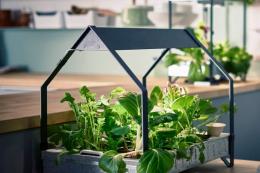
Nowadays, purchasing fresh herbs in winter is not a problem, but growing them at home does not lose popularity.
However, in order to get the most healthy and high-quality products, it is important to know how to grow greens on the windowsill.
Content:
- What greens can be grown in an apartment?
- What can you grow on a windowsill in winter?
- How to grow greens on a windowsill in winter, video
- How to grow greens on a windowsill in spring
- What primer is recommended to use?
- How to grow greens on a windowsill without soil
- How to fertilize greens on the windowsill
- Greenery on the windowsill: tips for beginners
What greens can be grown in an apartment?
Growing greens at home does not involve any special expenses or particularly painstaking work for the result.
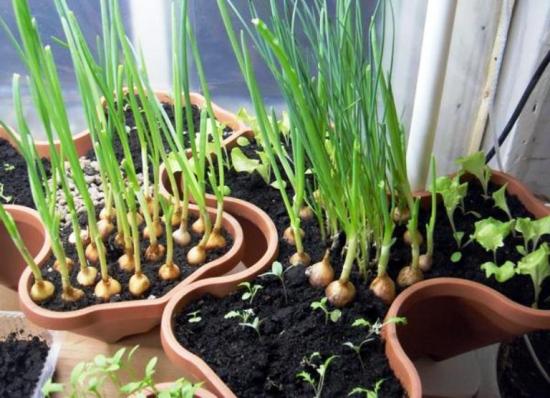
Almost any plant can be grown indoors, but the most productive is the planting of early ripening varieties with a short ripening period. In addition, these seedlings must be resistant to lack of sunlight.
In apartment conditions, especially in winter, it is quite difficult to provide seedlings with sufficient lighting.This problem can be solved with the help of an additional light source, but if you don’t want to spend money on it, you should pay attention to the plant’s resistance to light deficiency.

It is important not to forget about the size of the plant. It is both difficult and inconvenient to grow tall varieties in apartment conditions. Therefore, when choosing seeds, it is recommended to pay attention to low-growing varieties.
Of course, if you have the right desire, you can grow anything you want. However, better than others in apartment conditions low-growing and unpretentious crops will develop: parsley, onions, dill, coriander and cilantro. Something that is found in abundance in gardens in the summer and does not require a special microclimate.
What can you grow on a windowsill in winter?
In winter, when it’s white outside the window, you shouldn’t rely on environmentally friendly herbs from your garden plots. However, this problem can be solved by growing your own at home. mini garden.
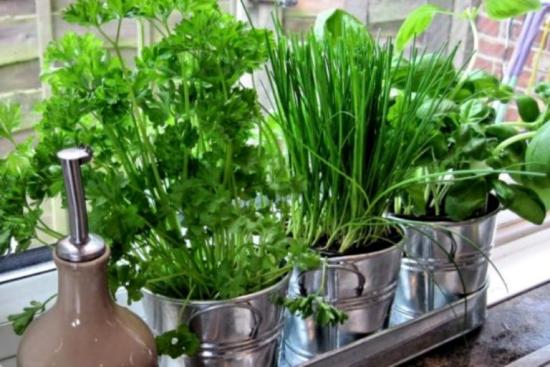
So indoors you can grow vegetables and herbs such as:
- Basil - Purple, Marquise or Clove;
- Cilantro - for dressing salads;
- Watercress - Prestige, Spring, Dansky;
- Leaf lettuce - Odessa curly, Oak leaf, Grand Rapids;
- Leaf mustard - Prima, Mustang, Freckle;
- Green onions - Chernigov, Soyuz, Rostov. It is grown rather for its feathers, which quickly grow and are easily restored;
- Mint and lemon balm are ideal for store-bought green tea;
- Vegetable purslane - Paradox, Golden;
- Parsley - Curly, Aster, Common leaf;
- Rosemary;
- Arugula - Poker, Corsica, Rocket;
- Leaf beet - Emerald, Beauty, Scarlet;
- Celery - Samurai, Zakhar, Cheerfulness;
- Dill - Richelieu, Grenadier;
- Chicory salad - Express, Rocket, Danish;
- Spinach - Stoic, Bordeaux, Virofle;
- Common sorrel.
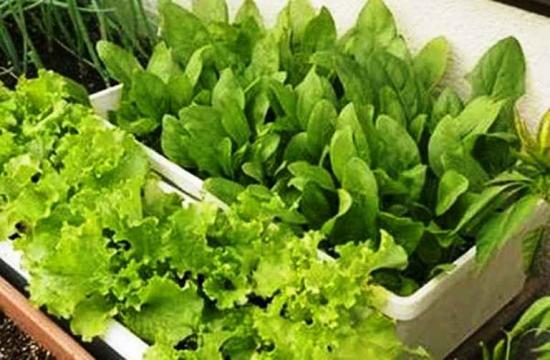
The number of varieties and species that can be grown indoors in winter is almost limitless. Of course, the taste of such herbs and vegetables will not be as pronounced as that of garden vegetables, but these herbs will definitely not be inferior to store-bought ones and will definitely not contain harmful chemicals.
Let's watch a video about the features of winter growing greenery with lighting:
How to grow greens on a windowsill in winter, video
Arranging a vegetable garden on your own windowsill is a task that does not require special knowledge or effort. You can grow herbs in simple containers for indoor flowers, wooden and plastic boxes. It is important that the boxes do not let in too much water.

In addition, when planting and caring for winter, it is important to consider a number of nuances:
- The optimal length for a box is considered to be 40-50 cm with a width of 20-25 cm and a depth of 12-15 cm. At the same time, there must be a drainage layer at the bottom, for which you can use expanded clay or simple pebbles;
- Before planting directly, it is recommended to water the prepared substrate with hot water. You can prepare the soil yourself, or purchase it at any gardening store. Make small grooves in the damp soil into which the seeds are poured. After planting, sprinkle the planting material with a small layer of soil;
- It is recommended to place containers with seedlings on a southern or southwestern windowsill, closer to the warmth and sunlight that all herbs so need;
- It is important to consider that in winter, plants often suffer from the dry heat of radiators, so it is recommended to cover the latter with special shields and do not forget about air humidification.This will be useful not only for seedlings, but also for the general microclimate in the apartment. If it is not possible to purchase a special device for humidifying the air, you can always simply place a damp cloth on the battery;
- It is recommended to water the seedlings once every two days. To do this, it is better to use settled water at room temperature. It is better to water in two approaches in small portions;
- If, after watering with such water, the leaves begin to lose color, the plant may be affected by chlorosis. This often develops as a result of the water being too acidic, which prevents nutrients from dissolving into the soil. This can only be corrected with the help of special herbal mixtures, which can also be purchased at a specialized store;
- It is important to consider that, even if located in the right place, plants still suffer from a lack of light in winter. They will still grow, but at the same time they will significantly lose the amount of vitamins and will appear inconspicuous and pale in appearance.
- This problem can only be corrected by organizing an additional lighting source. To do this, it is recommended to purchase fluorescent lamps to extend daylight hours to twelve to sixteen hours, optimal for many crops.
Plants grown on your windowsill in winter compare favorably with purchased ones in the absence of chemical additives, a large amount of vitamins and freshness. This additive can be safely added to salads without fear of harming your body, because you only get what you put in. Environmentally friendly and healthy product.
Let's watch a video on how to grow greens on a windowsill in winter:
How to grow greens on a windowsill in spring
The technology for growing a variety of herbs and vegetables in indoor conditions in the spring is almost identical to growing greens in the winter. So, for example, since in the spring, despite the increase in daylight hours, the weather is still cool, many are in no hurry to turn off the heating. Therefore, the heat of radiators, just like in winter, can harm seedlings. The frequency of watering, the rules of planting - all this does not depend on the time of year outside the window.

The only thing worth paying attention to is an increase in daylight hours, which will allow you to save on additional lighting. The maximum benefit can be obtained by placing the seedlings on a southern or southwestern window sill.
In the spring, indoors you can grow not only salads and onions, but also seedlings for subsequent planting in open ground. It is even recommended to gradually accustom the latter to street conditions, temporarily exposing them to an open balcony.
What primer is recommended to use?
Soil is one of the main points that you should pay attention to when preparing a bed on a windowsill.
For full and rapid growth and development, the soil must contain a number of components:
- Turf land - 30%;
- Coconut fiber - 20%;
- Coarse (river) sand - 20%;
- Leaf soil or peat - 20%;
- Perlite - 10%.
If you have all the ingredients, you can make the mixture yourself. However, if it is not possible to get the necessary components, or there is no desire to tinker, you can always purchase a universal substrate for growing seedlings. This can be found in any specialty store.
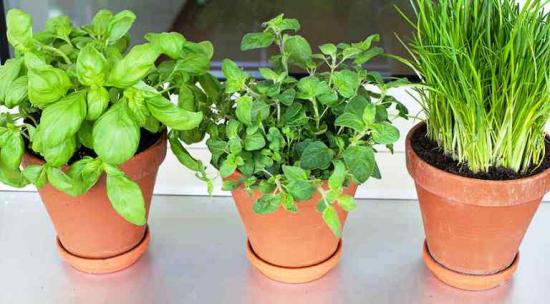
After the problem with the soil has been resolved, it is important not to forget to disinfect it. Drugs such as Maxim or Previkur, which prevent the development of fungal infections, can help with this.
How to grow greens on a windowsill without soil
Despite the fact that soil is the main component necessary for the normal growth and development of a plant, it is by no means always the only possible substrate. It is important to understand that soil with a minimum amount of nutrients will not provide plants with the necessary micro- and macroelements.
Fertilizing plays an important role in growing crops, as a result of which hydroponics is becoming increasingly popular.
The essence of the direction is that nutrients are supplied to the roots through special devices. In this case, the role of the substrate is played by perlite, expanded clay or vermiculite, impregnated with a nutrient solution of phosphorus, nitrogen, potassium, copper, iron, zinc, magnesium and calcium - all elements necessary for the normal growth and development of seedlings.
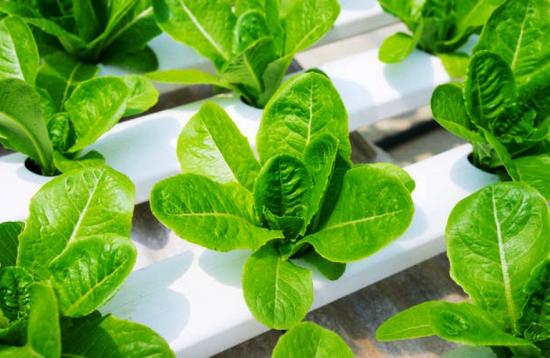
Everything else in this direction cannot be changed.
Plants still need enough light and it is better if the light is natural. However, if this is not possible, additional sources of artificial lighting are quite suitable.
The hydroponics method makes it possible to obtain a large harvest using a relatively small area. At the same time, you can grow not only traditional onions in this way, but also many other crops. So, only on a water basis with the addition of nutrients is it possible to grow such spicy plants as basil, cilantro, dill, parsley, mint, rosemary, lemon balm and others.
In addition to spices, watercress also grows well in an aquatic nutrient medium. In some cases, it can develop without adding additional fertilizers at all, only in water.However, nutrients will ensure the growth of more leaf mass.
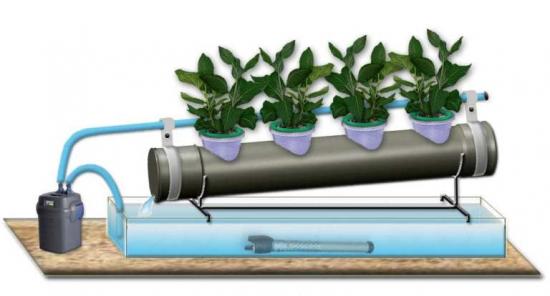
You can start growing greens using hydroponics by purchasing a special system, but it is quite expensive. In most cases, it is much cheaper to build your own system; there is nothing complicated about it.
When preparing your own system, it is important to take into account the main feature of the method - supplying the nutrient mixture in small parts. In some cases, the nutrient solution is even sprayed into the air, growing plants in the air using the aeroponics method, but this method is quite complicated for beginners.
Despite the fact that many are wary of growing plants without soil, this method has a number of undeniable advantages. This way, the harvest from such a plot can be obtained faster, it grows healthier, while requiring a minimum of time for care.
How to fertilize greens on the windowsill
There are a huge number of possible complex fertilizers recommended for feeding indoor and garden crops. However, this does not mean that you can take anything; on the contrary, the choice should be approached with all possible responsibility.
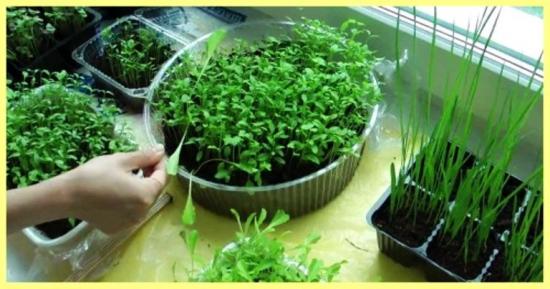
The best fertilizer for a garden bed on a windowsill is considered to be simple organic products such as banana peels, ash, egg shells and yeast.
These funds are good because they do not require additional expenses from the family budget. However, such fertilizers also have their drawbacks. In a closed room, an unpleasant odor may form. An exception is a solution of iodine or sugar in a glass of water.
If desired, of course, you can purchase complex supplements. However, when adding them, it is important to take into account that you should not add too much of these products, as this can lead to stretching of the plants.
Greenery on the windowsill: tips for beginners
Having decided to grow your own bed on the windowsill for the first time, it is important to know where to start and how to continue this matter.

But there is no need to worry in advance, there is nothing difficult about it, the main thing is to adhere to the basic rules:
- The substrate must be light to maximize the passage of air and moisture. The ideal option is a mixture of vermicompost with coconut fiber in a ratio of one to two;
- If you decide not to bother and take soil from the city, it must be disinfected. Otherwise, there is a danger of losing both the possible harvest and indoor flowers as a result of an attack of infections;
- At the bottom of the container, as when planting flowers, it is recommended to lay a layer of drainage no more than two centimeters in height. At the same time, the pot must have holes for water to drain;
- It is recommended to water using a sprayer, adding a little fertilizer to the water for irrigation once every few weeks;
- When choosing crops for cultivation, it is recommended to give preference to low-growing and early species;
- It is better to start germinating seeds in the fall. The warmth and length of daylight at this time will help the seedlings sprout faster;
- In winter, the lack of sunlight can only be compensated by fluorescent lamps; ordinary lamps are not suitable, since they produce more heat than light. It is recommended to place the lamps at a height of no more than half a meter above the seedlings;
- In order for the growth of green mass to be uniform, it is recommended to constantly rotate the plants.
Growing herbs on your own windowsill is not that difficult. It is enough to spend a little time and effort to turn your home garden bed green with a fresh harvest, which you can immediately send to the table.
Growing greens at home does not require special knowledge or effort. However, even the minimum time spent pays off in full, giving you a chance to forget about store-bought herbs for a long time.

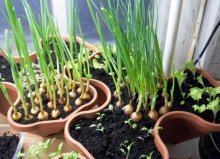
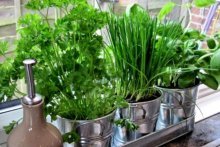
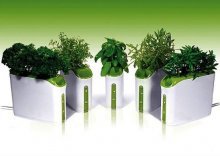

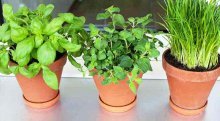
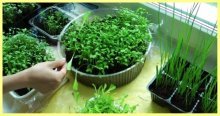
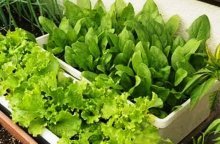

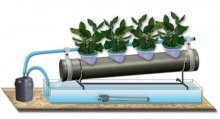
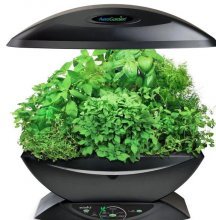


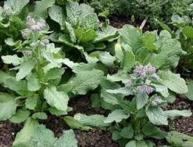
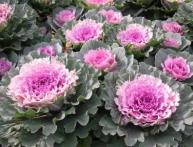
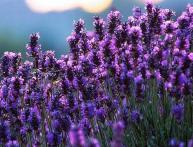




Comments
Onions grow well on the windowsill, they are always fresh and green, no effort is required for this, no care is required, just plant them in the ground and you will be provided with dishes with them for the whole winter.
When growing greens in a window, it is important to choose a container with holes for moisture drainage and place a layer of drainage on the bottom. Of course, if the soil growing method is chosen. Without drainage, the roots may begin to rot. The first sign is an unpleasant smell.
Grows well and quickly in hydroponics: dill, lettuce, basil, arugula. Plants are annuals. And perennials, such as: parsley, sorrel, mint. It is better and more productive to plant in the ground. But additional lighting should be as on a sunny day and for at least 14 hours.
I live in Norilsk and dill, parsley and basil grow well on my windowsill even on a polar night. Additional illumination of greenery with energy-saving lamps.
Of all the garden crops, green onions grow best on our windowsill. We also tried to grow tomatoes and hot peppers, but dill and parsley do not grow without additional lighting.
I would like to add how you can make your own homemade fertilizer from banana skins and eggshells. I infuse them separately in a jar of water for 2-3 days. Then I water it with this water. Also, if there is any mineral water left, I use that for watering. These are all natural remedies; you don’t have to worry about fertilizing them with chemicals.
I tried to grow basil from seeds, without soil, just put the seeds on wet gauze, instead of a greenhouse I used a cake container. They sprouted quite quickly. The main thing here is not to forget to moisten the gauze, otherwise the sprouts will dry out! Well, growing onions is actually a nice thing! I remember from childhood that my grandmother and great-grandmother always kept green onions on the window
After reading it, I understand how many mistakes I made in my past experience! Now it’s clear to me why, instead of five types of herbs, only onions were actively growing and fragrant. I received very complete information regarding fertilization and lighting. I really liked the ideas on how to plant compactly and get higher yields.